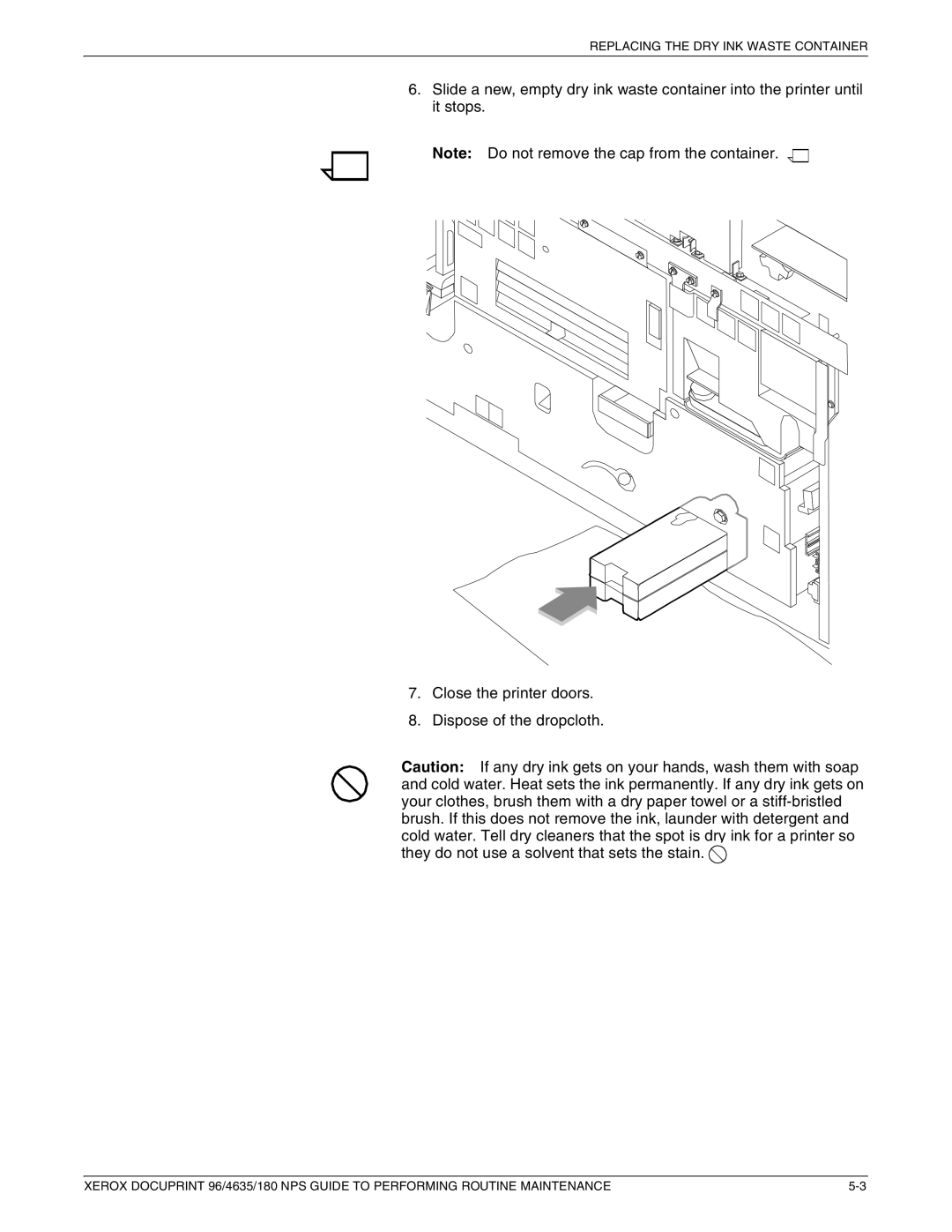96 specifications
The Xerox 96, released in 1975, was a groundbreaking entry in the world of computer printers, marking a significant evolution in document copying and printing technology. Designed primarily for corporate and professional environments, the Xerox 96 brought forth several innovative features and characteristics that set it apart from its predecessors.At the heart of the Xerox 96 was its unique electrophotographic printing process. This technology allowed for high-quality, high-speed reproduction of documents and images, distinguishing it from traditional printing methods that were slower and less efficient. The device utilized a photoconductive surface that could hold an electrostatic charge, enabling it to create a master copy that could be reproduced numerous times without loss of clarity. This was a significant advantage for businesses needing multiple copies of documents quickly and efficiently.
One of the standout features of the Xerox 96 was its automatic document feeder, which streamlined the copying process. Users could load up to 100 sheets of paper without the need for constant manual intervention. This automation not only saved time but also enhanced productivity, an essential factor for busy offices that relied on accurate and timely documentation.
Moreover, the Xerox 96 supported various paper sizes and types, making it versatile for different business needs. Whether producing standard letter-sized documents or oversized printouts, the machine accommodated a range of formats. The ability to print in both black and white also catered to the varied requirements of different users, from simple text documents to more complex graphics.
In terms of technological advancements, the Xerox 96 incorporated high-capacity toner cartridges, which reduced the frequency of replacements and ensured consistent print quality. The machine also featured a user-friendly interface, allowing even those unfamiliar with complex printing systems to operate it with ease.
Durability and reliability were other critical characteristics of the Xerox 96. Designed to withstand the rigors of daily use in a demanding business environment, the machine boasted a robust build quality that ensured longevity.
In conclusion, the Xerox 96 was a pivotal development in the realm of document duplication, marked by its advanced electrophotographic technology, automation features, versatility, and durability. Its introduction not only enhanced productivity in professional settings but also laid the groundwork for subsequent innovations in printing technology, solidifying Xerox's reputation as a leader in the industry.

